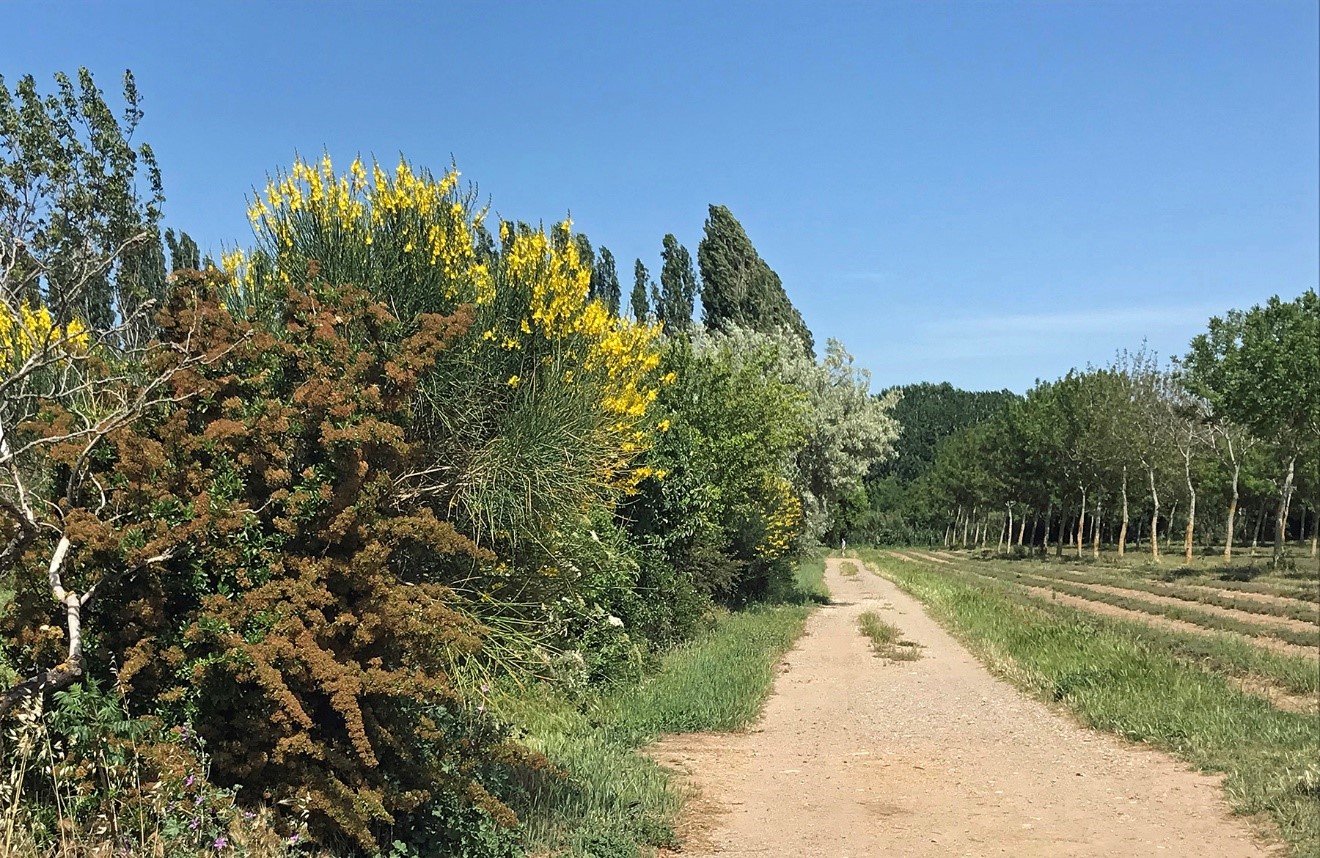Plant pollination by animals is a critical ecosystem service and an estimated 85% of the world’s flowering plants depend on animals, mostly insects, for pollination (Ollerton et al. 2011). Insect pollination is essential to food security and roughly 35% of global crop production is dependent on pollination by animals (Klein et al. 2007; Eilers et al. 2011). Globally, insect pollinators are in decline, with some estimates that 40% of invertebrate pollinator species may be at risk of extinction worldwide due to threats such habitat fragmentation and loss, use of pesticides, and diseases and parasites (IPBES 2016). By adding structural and functional diversity to agricultural landscapes, agroforestry may be able to support pollinator conservation and pollination services.
A systematic review entitled Temperate Agroforestry Systems and Insect Pollinators: A Review was recently published in a special agroforestry issue of Forests. This review conducted by the USDA National Agroforestry Center and the Xerces Society provides a scientific assessment on how temperate agroforestry systems influence insect pollinators and their pollination services with an emphasis on the role of trees and shrubs. The assessment consisted of 134 peer-reviewed articles, the majority of which focused on windbreaks, shelterbelts, and hedgerows, with limited papers available on riparian buffers and alley cropping. There were few or no studies on silvopasture, forest farming, or multi-story cropping regarding insect pollinators in temperate regions.
Our review indicates that agroforestry practices provide three overarching benefits for pollinators: (1) providing habitat including foraging resources and nesting or egg-laying sites, (2) enhancing site and landscape connectivity, and (3) mitigating pesticide exposure. The available scientific evidence suggests that agroforestry practices can enhance crop pollination and yields; however, few studies have been conducted on this ecosystem service. Table 1 and Figure 1 provides a summary of this review.
 Figure 1. Conceptual diagram illustrating typical functions that a generic agroforestry practice can provide to insect pollinators (Bentrup et al. 2019).
Figure 1. Conceptual diagram illustrating typical functions that a generic agroforestry practice can provide to insect pollinators (Bentrup et al. 2019).
 Table 1. The role of temperate agroforestry practices and woody plants on insect pollinators and pollination (Bentrup et al. 2019).
Table 1. The role of temperate agroforestry practices and woody plants on insect pollinators and pollination (Bentrup et al. 2019).
One of the key benefits of agroforestry for pollinator conservation is the value of floral resources provided by trees and shrubs. Tree and shrub species offer abundant nectar with relatively high sugar contents such as maple (Acer spp.), horsechestnut (Aesculus spp.), basswood (Tilia spp.), willow (Salix spp.), brambles (Rubus spp.), cherry and plum (Prunus spp.), and serviceberry (Amelanchier spp.). Pollen is a protein-rich resource that is used by native bees, honey bees, and some wasps to feed their brood or to provision their eggs. Key woody species that can provide nutritionally-rich pollen include willow, maple, cherry and plum, brambles, chestnut (Castanea spp.), and ash (Fraxinus spp.).
Woody species in temperate regions often flower early in the spring and can deliver some of the first pollen and nectar resources of the season, boosting early-season pollinator populations. Spatially, agroforestry practices that include a diversity of flowering species can deliver a high density of floral resources relative to the land area occupied due to vertical layering. Other agroforestry benefits are described in Table 1.
Through this review, key information gaps were also identified. Existing evidence demonstrates the conservation benefits that linear agroforestry practices can provide to insect pollinators. Although these benefits should translate into enhanced pollination services leading to increased crop yields and quality, few studies have been conducted to document this direct agronomic benefit.
Crop type, landscape context, plant material used in the agroforestry practice, ratio of agroforestry area to crop area, and spatial distribution of the agroforestry practice are variables needing further research in order to better understand the impacts of agroforestry on pollination services. In addition, cost-benefit studies that assess the economic benefits of an agroforestry practice for crop pollination compared to implementation, management, and opportunity costs need to be conducted.
A primary advantage for using agroforestry to support pollinators is that these practices are often being implemented for other production and ecosystem services. These practices often inherently provide some pollinator benefits and with additional considerations during design and management, the effectiveness of agroforestry practices for pollinator conservation and pollination services should be enhanced (Figure 2).

Figure 2. A hedgerow designed and managed to provide crop protection and pollinator habitat.
References
Bentrup G, Hopwood J, Adamson, NL, Vaughan M (2019) Temperate agroforestry systems and insect pollinators: a review. Forests 10:981. https://doi.org/10.3390/f10110981
Eilers EJ, Kremen C, Greenleaf SS, et al (2011) Contribution of pollinator-mediated crops to nutrients in the human food supply. PLoS ONE 6:e21363. https://doi.org/10.1371/journal.pone.0021363
IPBES (2016) Assessment Report on Pollinators, Pollination and Food Production. Intergovernmental Science-Policy Platform on Biodiversity and Ecosystem Services, Bonn, Germany
Klein AM, Vaissière B.E., Cane J.H., et al (2007) Importance of pollinators in changing landscapes for world crops. Proc R Soc B Biol Sci 274:303–313. https://doi.org/10.1098/rspb.2006.3721
Ollerton J, Winfree R, Tarrant S (2011) How many flowering plants are pollinated by animals? Oikos 120:321–326. https://doi.org/10.1111/j.1600-0706.2010.18644.x
